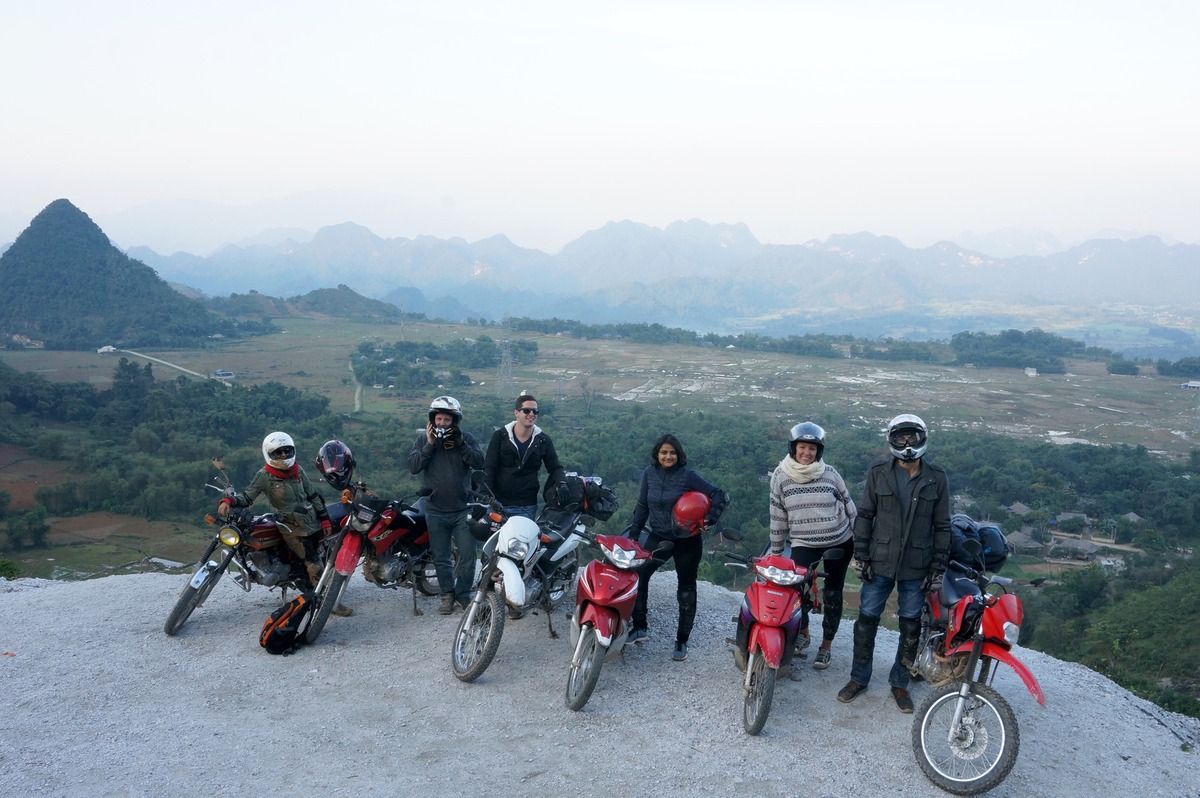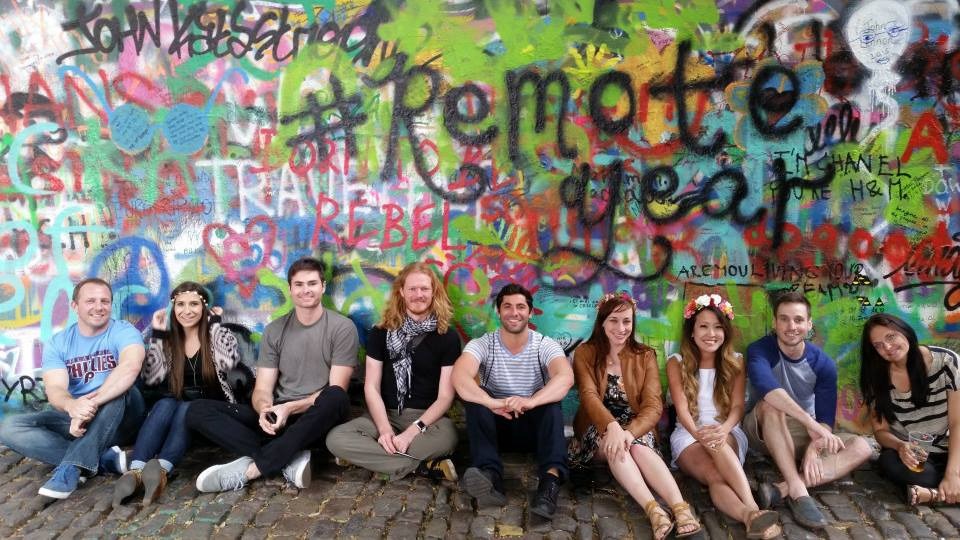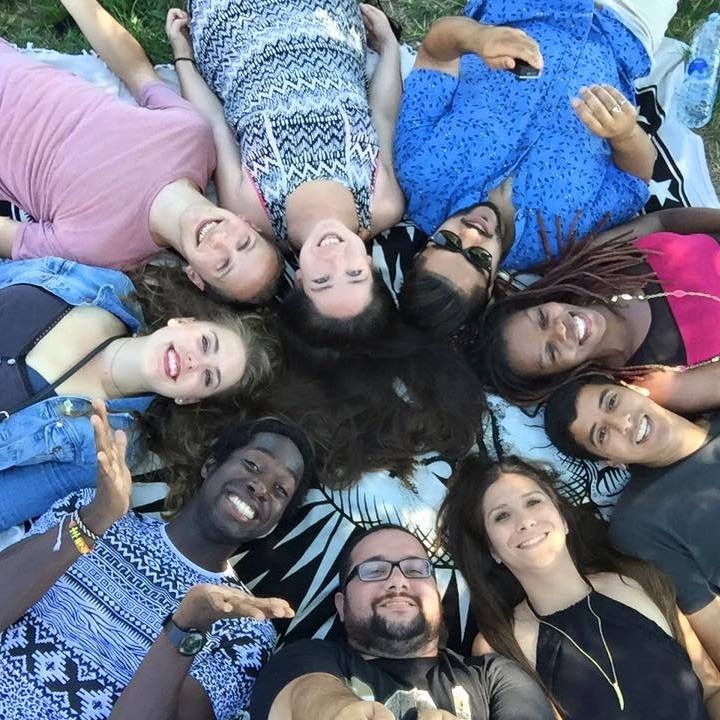
A few weeks ago, I noticed the hashtag #IWokeUpToA trending on Twitter.
The premise of the topic was self-explanatory. People all over the world were chiming in on the social platform, detailing their mornings in 140-character anecdotes.
That particular morning, I’d awoken to the screech of wheels against track as an overnight train from Sapa, a scenic, remote village in northern Vietnam, pulled into Hanoi, my home for the month of December.
I’d woken up to fresh memories of rice fields shimmering in a stunningly green valley, the water of the paddies as still as glass. I’d woken up to sore muscles from summiting the highest peak in the Indochina region two days prior — the first mountain I’d ever conquered. I’d woken up to foggy remnants of dreams about hot air balloons in Turkey, skydiving in Croatia and getting caught in the rain in Berlin.
I’d also woken up to an overwhelming number of emails that had trickled in while I’d been sleeping during New York City working hours.
It’s hard to explain that morning in 140 characters, just as it’s nearly impossible to answer the most common question I receive when I talk to friends and family at home about my experience: “So, how is it?”
The “it” they’re referring to is the lifestyle I’ve been leading for the past six-plus months. I’m one of the inaugural class participants of Remote Year, a program that’s equal parts startup, social experiment and travel community.
It’s not an employment-provider nor a travel agency, but a facilitator company uniting professionals from around the globe who are already able to do their jobs remotely. For a monthly fee, the program provides accommodations, access to local SIM cards, a workspace, Internet, travel to and from each destination on the 12-city itinerary, a few social events per week, and sporadic meals and networking events.
The year started off with about 70 participants, each willing to take a slightly insane but inevitably life-changing leap of faith. We embarked on this year striving to learn how to function as a community, and also how to experience the world from behind the lens of a relatively new breed of traveler — the “digital nomad,” as far more buzzword-loving writers than I have dubbed it.
With 70 initial participants, there are also 70 opinions of the program. I can only speak for one — though I can say without a doubt that one life has been irrevocably changed for the better.
Here is a little about the experience thus far.
The initial roller coaster
I don’t consider myself an overly emotional person. Aside from of a few youthful, volatile relationships, I would say my emotional range hovers from about a four to a seven on an everyday basis. Barely missing the subway when I’m already late for work is a max of a six on Steph’s Richter Scale of Pissed Off.
This trip has led to more twos and nines than I thought I had in me, often within extremely short periods of time.
Travel, jet lag and culture shock magnifies everything, from trivial matters to genuine inconveniences. Something that would be no biggie back home can be a huge obstacle in another country: A work call that’s pushed back at the last minute can derail an entire day after I’ve carefully arranged my schedule.
We’re moving every month, and with that comes a natural period of adjustment: getting used to a new time zone, learning some basics of cultural customs and language, the simple matter of being able to locate “home” on a map. Change is jarring, and I’m undergoing a lot of it.
As traveling professionals, work schedules vary for each of the Remote Year participants. Some still work full-time jobs on partial east- or west-coast hours, which can be stressful with time zone overlap (or lack thereof). Others work freelance jobs or find themselves constantly on the hunt for clients, which is an entirely different type of stress. Others still are perfectly comfortable with the digital nomad lifestyle, and have already been working remotely for years.
I went through a period of a completely insanity-inducing sleep schedule: I’d be awake until 5 a.m one night, then awake again at 8 a.m. I’d fall asleep at 11 p.m. the next night, only to wake up at 3 a.m. I had frequent conference calls at odd hours, and sometimes I’d be on Skype or Hangouts straight from midnight until 4:30 in the morning.
There’s also an aspect of navigating the bizarre social dynamics that naturally occur when 70 (mostly single) twenty- and thirty-somethings live together in close quarters for an entire year. The community vibe is constantly evolving, and it can be easy to fall into a group mentality without stopping to think about my individual feelings on a topic.
It’s not easy to make 70 people happy all the time. Some of us love the cold weather. Some of us hate rice noodles. Some of us are well traveled, while others had hardly left our home countries before embarking on this year abroad. Nearly everyone has a different opinion on the places we’ve been so far that fall into the category of “worst” or “best.”
The program organizers have to strike a delicate balance between trying to accommodate as many of our needs as possible and drawing a line in the sand when it comes to hand-holding. It’s a learning experience for every single one of us, sometimes in ways that no amount of forethought could have predicted.

Traveling the world and collecting a steady paycheck for a year seems like an absolute dream. In many regards, it is. And as much as I’d love to answer my friends and family with gushing, cheerful responses when they ask me about my time abroad, I’m not always able to do that with complete honesty. There are days when it’s just plain hard.
Nobody rushes to social media to post when they’re sick for days on end, or missing home, or so stressed over work that their hair is falling out. Travel is often difficult, uncomfortable and draining — but that’s not a reason to throw in the towel. Because when the heartbreakingly beautiful, surreal, unimaginable experiences do happen, they’re even more breathtaking in person than they look behind a carefully selected Instagram filter.
Finding the groove
I started jotting down notes about my experience within the first few weeks of the trip in preparation for this look back, and most of the previous section comes from those early scribbles. In the past couple months, the roller coaster ride has smoothed considerably.
For one thing, I’ve adjusted to adjusting. The recovery period between leaving a location with which I’ve grown familiar and acclimatizing to a new city is shorter. The shock doesn’t hit as hard. I’ve managed to work out processes with my colleagues back in New York that make my meetings schedule manageable.
By month five, in Thailand, I finally started sleeping regularly again.
The program itself seems to have fallen into a natural rhythm as well, the organizers having learned from early blunders and misfires. Overall, the group as a whole seems to be in a more content — and a less tumultuous — frame of mind.
At the near halfway point through this journey, the contradictory nature of time, seemingly fleeting and simultaneously gone in the blink of an eye, has never been more apparent. Part of me can’t imagine my life before this, and part of me can’t believe that I’m closer to the end than the beginning of my year of travel.

Speaking of which, my second-least favorite question: “So, what’s your plan for after?”
For now, in the same way as I respond to the first inquiry, I just smile, nod my head and try to keep my response polite.
A journey of self-discovery with the comfort of a community
Talking relentlessly about “the community” makes me feel like a character in a Margaret Atwood novel.
We spend a lot of time talking about Remote Year with one another and, frankly, with absolutely anyone we speak with for more than 30 seconds. We’ve memorized the script for explaining the program when asked about it by locals or other travelers.
Traveling this way has led me to a new level of self-awareness. I set out on this year with a list of goals, some personal and some professional, but all of which centered around a quest for self-improvement.
So when I arrived in Prague on day one, I was ready to get to work. As weeks one, two and three passed, it became apparent that my lofty goals weren’t going to magically materialize in a matter of days. This realization was frustrating; I wanted immediate gratification. I wanted to see change ASAP.
But four and a half months into my trip, in the midst of a sleep-deprived bout of wrestling with jet lag, culture shock, a horrifying work schedule and my “new normal” in general, something in me cracked open like a coconut. All of a sudden, some of the things I came on this trip to accomplish seemed leaps and bounds more attainable.
Now, even farther into the thick of it all, I feel as if I’ve made real progress.
Part of this personal growth centers around self-sufficiency, as counterintuitive as it is that I joined a community-based program to attain that specific goal. Every Myers Briggs’ personality test I’ve ever taken has dubbed me an unequivocal extrovert. I thrive on close, personal relationships, and I’m an over-sharer by nature.
And yet, as I make my way through this year, I find that I cherish my alone time much more than I ever thought possible. I’ve gained the confidence to take some solo side trips and I’ve learned the art of saying “no” — and the art of being a little selfish, too.
Despite this newfound level of introversion, there’s something hugely comforting about the fact that, although this experience is extremely personal on an individual level, our weird little travel family has a truly extraordinary bond.

I may not be best friends with every one of my fellow travelers, but I know in my heart I could call any of them in a pinch and they’d have my back. They’re the only friends who know what it’s like to measure months by countries, and the only friends with whom I’ve watched the sun rise and set in Istanbul, Thailand and Japan. They’re the only ones who understand the complicated nature of, “How is it?”